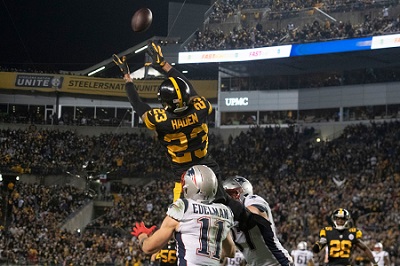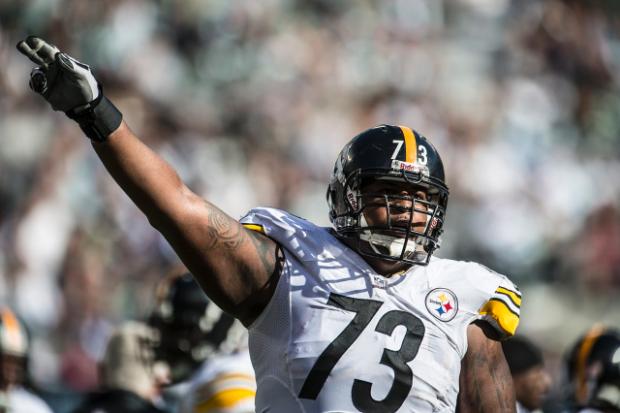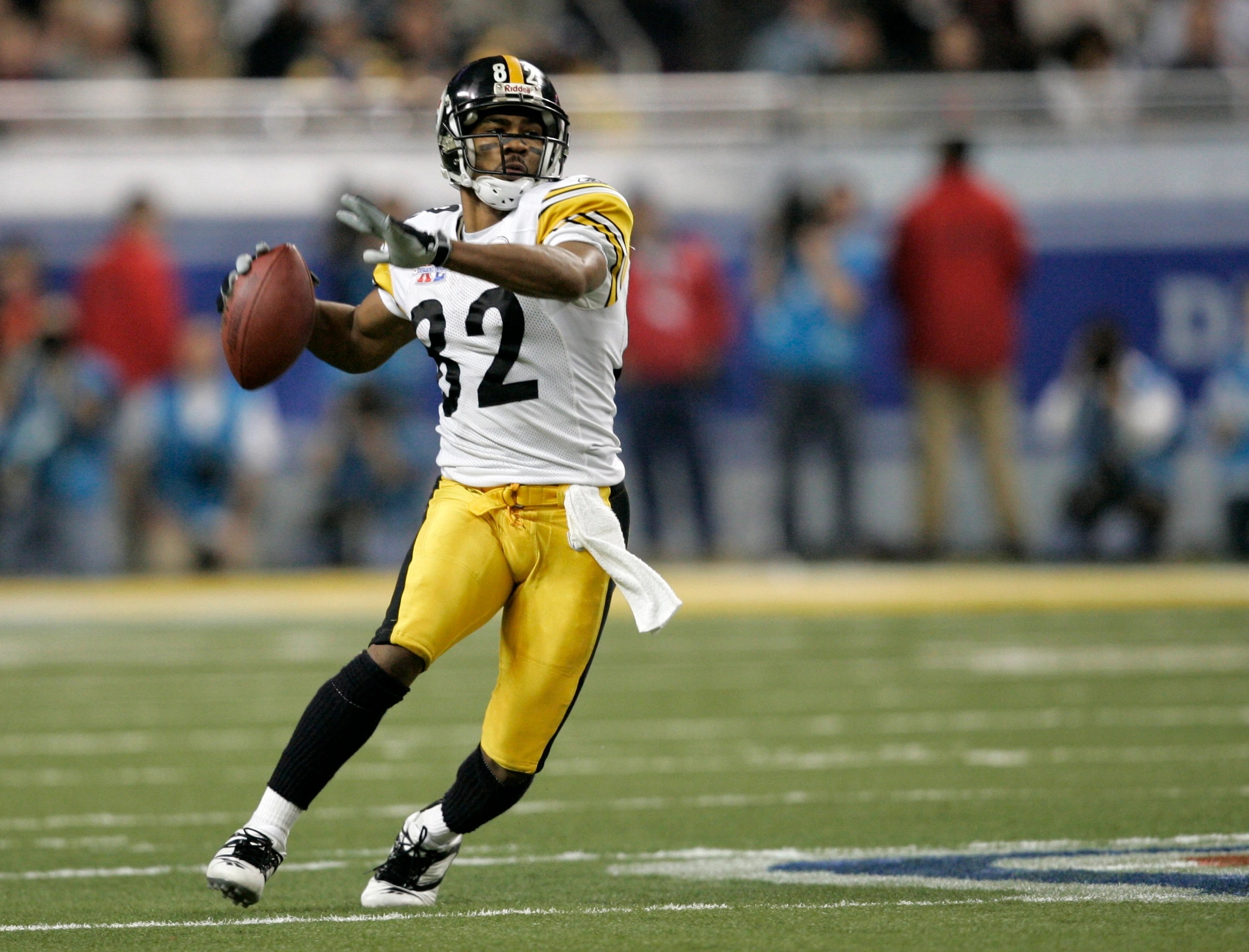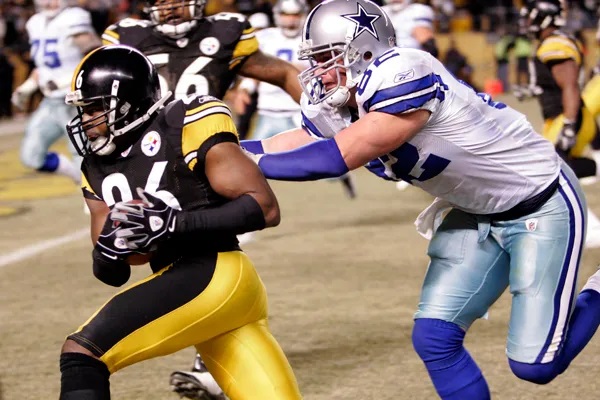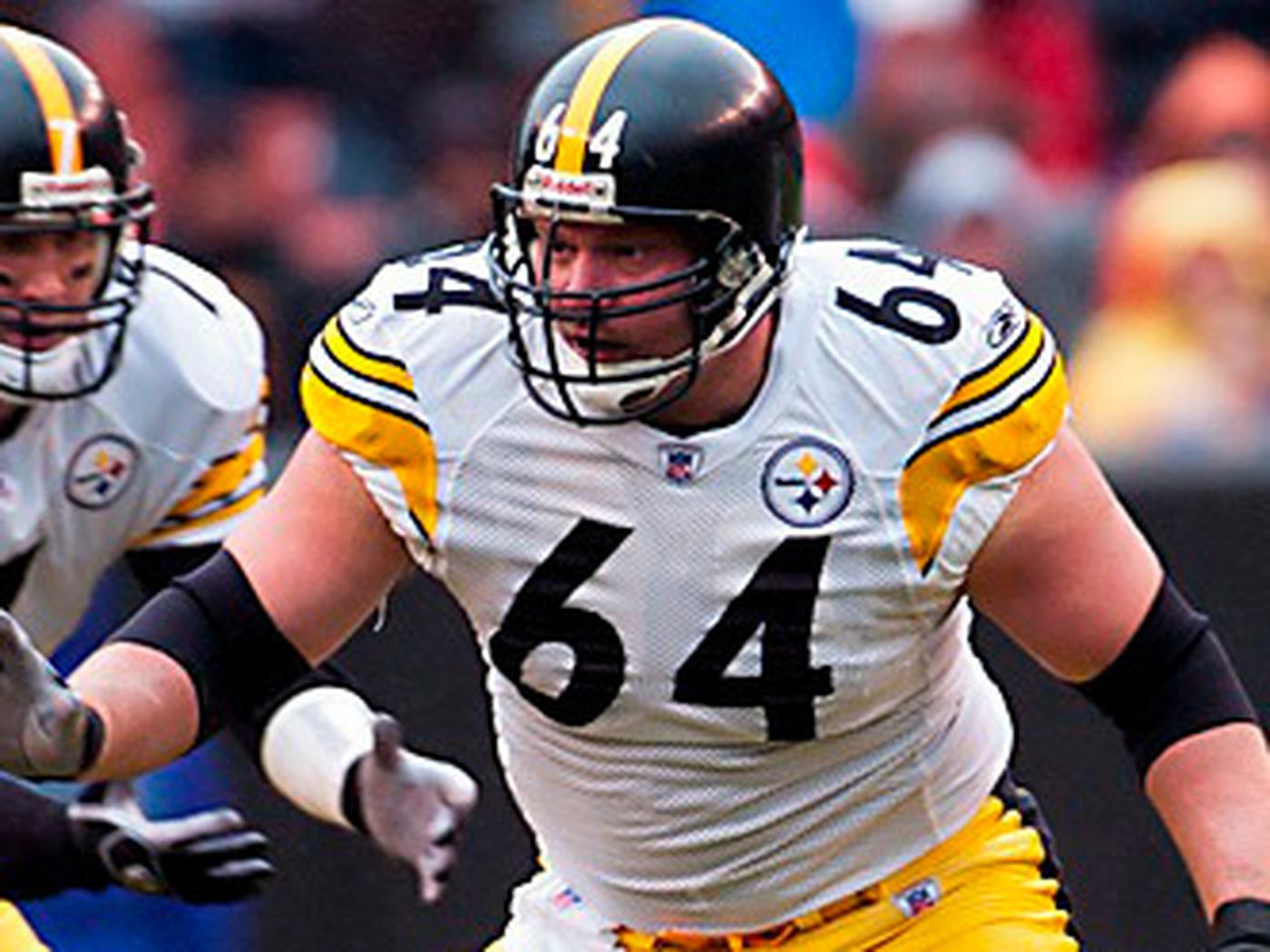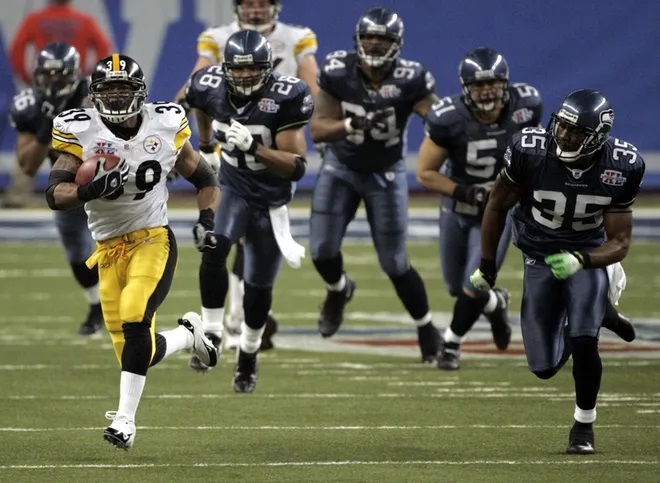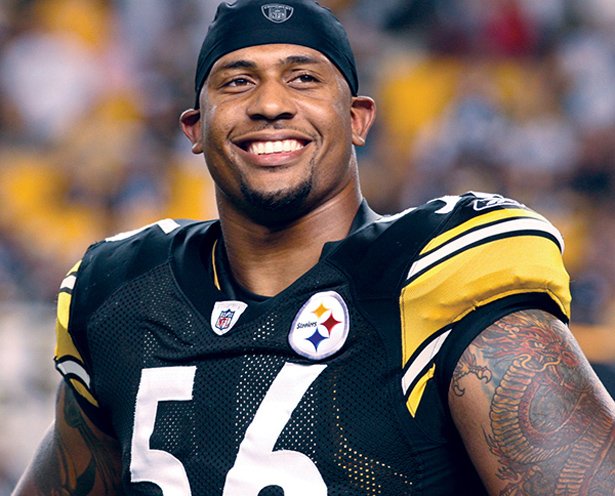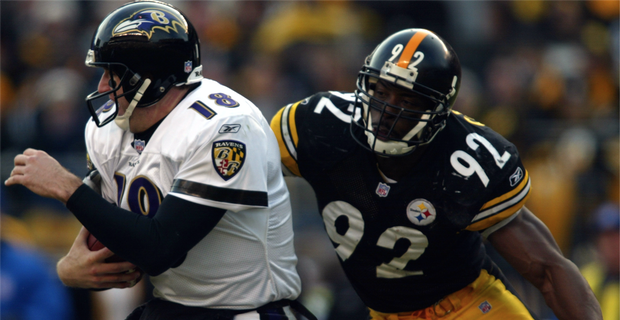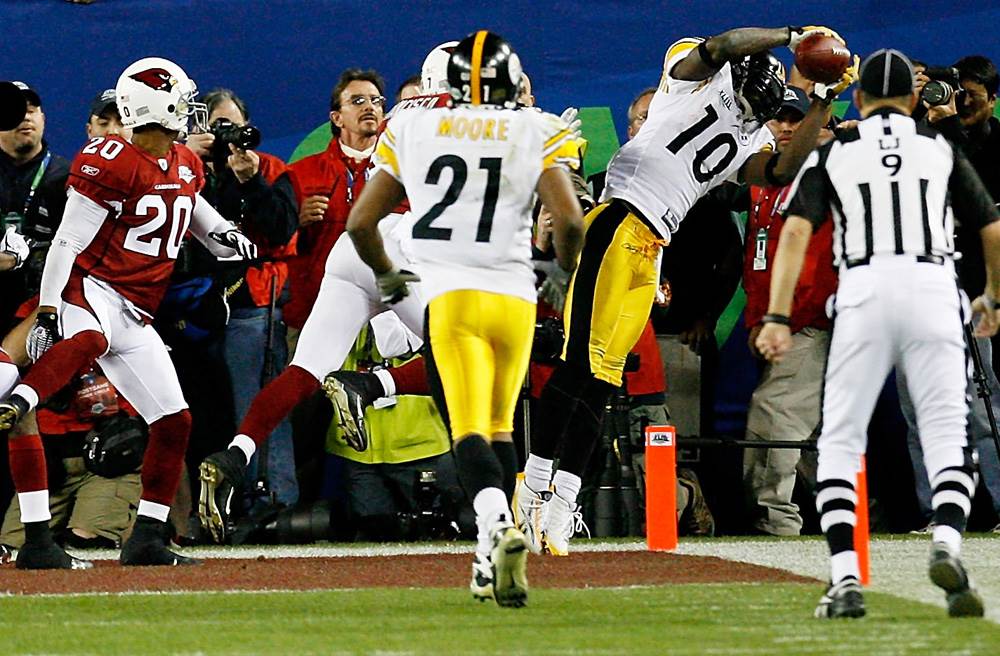It’s the offseason and there’s not much happening in the NFL world. In fact, as we like to say around these parts, the only news is bad news. That can take the form of player injuries, arrests, suspensions, etc. But since it’s the offseason and there isn’t much going on, we figured we’d have some fun. There have been some lists floating around on Twitter of “Who was this team’s best non-QB player this century?” While the SCB crew was debating that question, we wound up with a list of our Top 50 Steelers of the century.
The one prerequisite to this list is that the player had to play at least three seasons with the Steelers since the year 2000. So that means that recent additions like Najee Harris and Kenny Pickett are not eligible, along with one-year wonders like Flozell Adams. Since the Steelers Hall of Honor also uses the three-year timeframe as a guide for elections, we also thought it was a good parameter. You could also look at this list as our power rankings of players worthiness to be in the Hall of Honor.
So far we have gone through some Honorable Mentions and #50-41 as well as #40-31 on the list. Today we’ll tackle the next 10 entries, counting down from #30 to #21.
30. Joe Haden
Haden spent the first seven years of his NFL career languishing in Cleveland. After he was a salary cap cut by the Browns during training camp in 2017, the Steelers pounced. The addition of Haden dramatically improved their secondary. He made an immediate impact as part of a 2017 team that went 13-3. Over his 5 seasons in Pittsburgh Haden started 68 games and had 10 interceptions and 54 passes defended. He was responsible for one of the most iconic plays in recent history when he made a leaping interception of a Tom Brady pass to secure a Steelers victory over the Patriots. His best year in Pittsburgh came in 2019 when he started all 16 games, had 5 interceptions, a forced fumble, 65 total tackles, and made the Pro Bowl.
29. Le’Veon Bell
Le’Veon Bell’s 5-year career in Pittsburgh ended unceremoniously with him holding out on the team and refusing to play on the franchise tag. Bell wanted a long-term contract but turned down what was reportedly a very generous offer. While his refusal to play the final year tarnished his reputation, what he did on the field can not be denied. Bell was first team All-Pro twice, second-team once, and a 3-time Pro Bowler. He revolutionized the running back position in Pittsburgh to be both a threat on the ground and through the air. His patient running style evolved from jump-cuts early in his career to a combination of vision and footwork that allowed him to make something out of nothing better than any back the Steelers had in a long time. Bell was one of the best in the league at turning a 2-yard loss into a 4-yard gain. He only played one complete season in Pittsburgh as knee injuries derailed two campaigns and kept him out of some key playoff clashes. The one year he did play in the postseason – 2016 – he set Steelers records in the first two rounds to carry the team to the AFC Championship in New England. After leaving Pittsburgh, Bell never regained his previous form and bounced around between four teams over the next three seasons.
28. Ramon Foster
Foster was an undrafted free agent in 2009, a draft where the Steelers took another offensive guard (Kraig Urbik from Wisconsin) in the 3rd round. But Foster out-played Urbik during training camp and worked his way into a starting role at left guard after Chris Kemoeatu was injured in Week 12. In 2010, he beat out the aforementioned Urbik for a roster spot and Urbik was cut. Foster once again worked his way into a starting role after Trai Essex struggled and stayed in the starting lineup all the way through Super Bowl XLV. Foster would become a full-time starter in 2011 and he started 133 games over the remainder of the decade. In his 11-year career he started 145 games for the Steelers and was a stabilizing force along the offensive line who made a lot of the alignment and audible calls. He is one of the great success stories of undrafted free agents. However, what Foster is arguably the most famous for is his abilities in the kitchen which earned him the nickname “The Big Ragu” after his renowned lasagna dishes.
27. Antwaan Randle El
“El Yeah” was a college quarterback who converted to a wide receiver in the NFL. But Randle El was also much more than that. He was a dynamic playmaker with the ball in his hands, capable as a kick and punt returner, slot receiver, and gadget player to throw the occasional pass. He spent just five years in Pittsburgh but accounted for numerous memorable plays, including a pass to Hines Ward in Super Bowl XL and an iconic punt return that turned the tied of the Renegade Game against the Browns in 2002. In his Steelers career, Randle El had over 2200 receiving yards and 7 TDs, over 300 rushing yards, 4 punt return TDs, a kickoff return TD, and threw for 170 yards and 4 TDs. In 11 career playoff games he added 365 receiving yards and 1 TD, 19 rushing yards and 1 TD, along with the aforementioned punt return TD against the Browns and touchdown pass to Hines Ward to win the Super Bowl.
26. DeShea Townsend
Townsend was drafted in 1998 and after years playing on special teams and as a nickel corner, he stepped into a starting role in 2003 after Dewayne Washington was benched. He would miss just one game over the next four seasons, playing both as an outside corner and as a slot corner. DeShea also developed into a solid slot blitzer with his most memorable sack coming in the waning minutes of Super Bowl XL to help the Steelers secure the win. His best statistical season came in his first year as a starter (2004) when he had career highs in interceptions (4), sacks (4), and tackles (56). Other than the sack in the Super Bowl, Townsend’s most memorable play came in 2008 against Dallas with under 2 minutes to play when he intercepted Tony Romo (who had not thrown a 4th quarter interception all season) and returned it for the game-winning touchdown. DeShea appeared in 183 games over 12 years for the Steelers and had 21 interceptions, 15.5 sacks, and scored 3 defensive touchdowns. Additionally, he played in 14 postseason games and won two Super Bowl rings.
25. Jeff Hartings
Hartings was originally drafted by the Lions and came to the Steelers in free agency in 2001. He made the move from guard to center and flourished. In his first year at center he was voted 2nd team All-Pro. Hartings would improve upon that in the 2004 season when he was the 1st team All-Pro Center and elected to the Pro Bowl. He made the Pro Bowl again the following year and earned a Super Bowl ring. All told, Hartings spent 6 years in Pittsburgh, made 2 Pro Bowls, a 1st team All-Pro, a 2nd team All-Pro, and won Super Bowl XL. Hartings was incredibly durable in the middle of the line. He missed just 6 games over his 6 years, appearing in 90 regular season and 10 playoff games for the Steelers.
24. Willie Parker
Fast Willie Parker came to the Steelers as an undrafted free agent in 2004 who didn’t play much in college due to disagreements with the coaching staff. Parker flashed great speed in camp but only played sparingly his rookie season. In Week 17, with the top seed secured, the Steelers rested their starters so Parker got plenty of playing time and dashed the playoff hopes of the Buffalo Bills. He ran for 102 yards, including a 58-yarder. Parker’s play in the 2004 finale earned him a roster spot the following year where he took over the starting role. Over 15 games in 2005, Parker ran for 1200 yards and 4 TDs (with Jerome Bettis getting a lot of the short-yardage work). Parker’s put an exclamation point on his season by ripping off a 75-yard touchdown run in Super Bowl XL, the longest run in Super Bowl history. Parker made the Pro Bowl in each of the following two seasons, running for nearly 1500 yards and 13 TDs in 2006 and 1300 yards but just 2 TDs in 2007 before a broken ankle ended his season early. Parker was once again part of a Super Bowl-winning squad in 2008, re-taking the starting running back duties after first round pick Rashard Mendenhall broke his collarbone. Parker spent all 6 of his Pro Seasons in Pittsburgh and his 5,378 rushing yards are 3rd on the Steelers all-time rushing list, behind just Franco and Jerome. Parker’s game-breaking ability with his long speed to take a carry to the house at any time was critical to the Steelers success in two Super Bowl runs, and they haven’t had a player with his home run abilities since his retirement.
23. LaMarr Woodley
Woodley was the Steelers second round pick in Mike Tomlin’s first draft as head coach. He played sparingly in a backup role behind Clark Haggans as a rookie, but as the season went on it became clear that Woodley was the superior player. He rung up two sacks in a playoff loss to Jacksonville and took over the starting outside linebacker role the following year. He put together one of the best three-year runs for a pass rusher in Steelers history with 11.5, 13.5, and 10 sacks and 50+ tackles in all three seasons. He also found the end zone in all three seasons with two fumble returns and a pick-six. His 20 TFLs in 2009 led the league and he was selected to the Pro Bowl and second-team All-Pro that year. That three-year stretch parlayed into a massive second contract, but unfortunately Woodley was injured against the Patriots midway through 2011. He had already amassed 9 sacks through 10 games but was never the same player after that hamstring injury and had a continuous run of soft tissue injuries. Woodley was a big-game player with 11 career sacks in the playoffs including 2 per game in his first four playoff games and 1 per game in the run to the 2010 Super Bowl appearance. He came up with the strip sack of Kurt Warner in the final seconds of Super Bowl XLIII to secure the Steelers sixth Lombardi. Woodley had an extremely powerful base and had a great bull rush to push tackles back into the lap of the quarterback. In total, Woodley appeared in 94 regular season games with 57 sacks, 5 interceptions, 9 forced fumbles, 3 touchdowns, 68 tackles for loss, 98 QB hits, one Super Bowl ring. In the playoffs he played in 8 games with 11 sacks, 12 TFLs, 17 QB Hits, and a forced fumble.
22. Jason Gildon
At the time of his retirement, Gildon was the Steelers All-Time Sack Leader in official sacks (which had only been kept as a statistic since 1982). Gildon’s 77 career sacks were fewer than the unofficial totals of Joe Greene and LC Greenwood. While he broke into the NFL in 1994 and was a backup behind Kevin Greene and Greg Lloyd in the 90s, the best years of his career came in the early 2000s, which landed him on this list. In just the four years he played this century (2000-2003), he recorded more than half of his career sacks (40.5), made 3 Pro Bowls, and was a first team All-Pro. Gildon’s 13.5 sacks in 2000 were the team’s single-season record until James Harrison broke it in 2008. All told, Gildon started all 64 games in his four seasons this century (and played in 158 games over his 10-year Steelers career). His 40.5 sacks in the four seasons of this century would have been enough to be in 13th on the Steelers all-time sack list.
21. Santonio Holmes
Tone was the Steelers first round pick in 2006, the final year of the Cowher era. They traded up with the Giants to be able to take Holmes, their last trade up until the move to get Devin Bush. Holmes was used as both a kick and punt returner as well as a receiver as a rookie, but had some fumbling issues which he eventually overcame. He punctuated his rookie season (and Bill Cowher’s coaching career) with a walk-off touchdown against the Bengals in overtime to keep Cincinnati out of the 2006 playoffs. In 2007 he stepped into more of a starting role and had a career-high 8 touchdowns. The 2008 season saw a dramatic increase in targets for Holmes. He capped off his regular season with a diving touchdown at the goal line to beat the Ravens and clinch the division. He put together an outstanding postseason which featured a 67-yard punt return touchdown against the Chargers, a 65-yard touchdown in the AFC Championship against the Ravens, and then the iconic touchdown in the back corner to beat the Cardinals and clinch Super Bowl XLIII. Holmes was the Super Bowl MVP with 9 catches for 131 yards and the game-winning score. While he spent just 4 years in Pittsburgh (being traded away after a 1200-yard season in 2009 due to an impending suspension, the latest in a line of legal incidents that marred his career), he was a Super Bowl MVP with game-breaking speed and was capable of taking slants and crossers upfield for big gains. Holmes routinely stepped up in the biggest situations as 8 of his 25 career TDs came against the Ravens.


